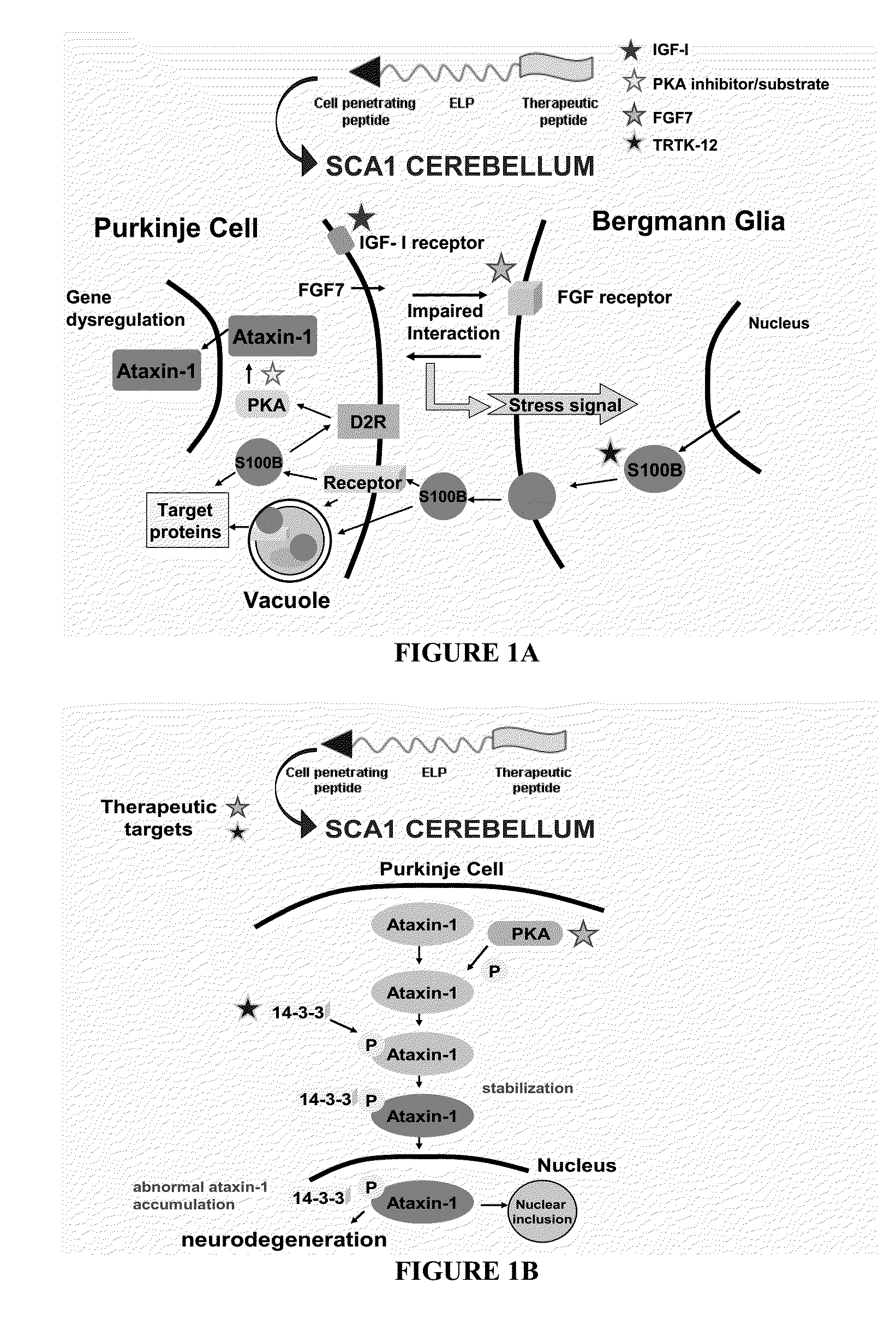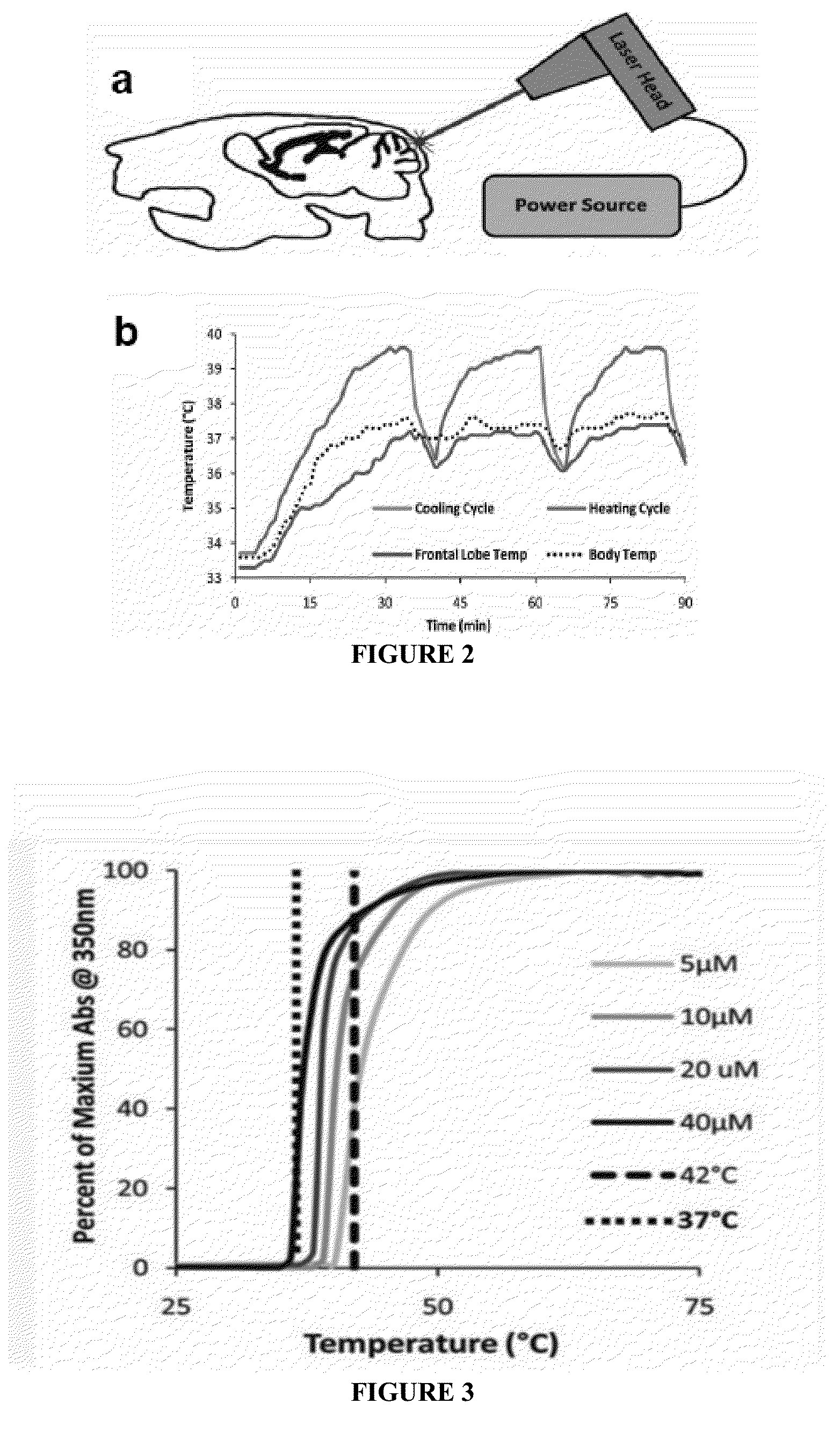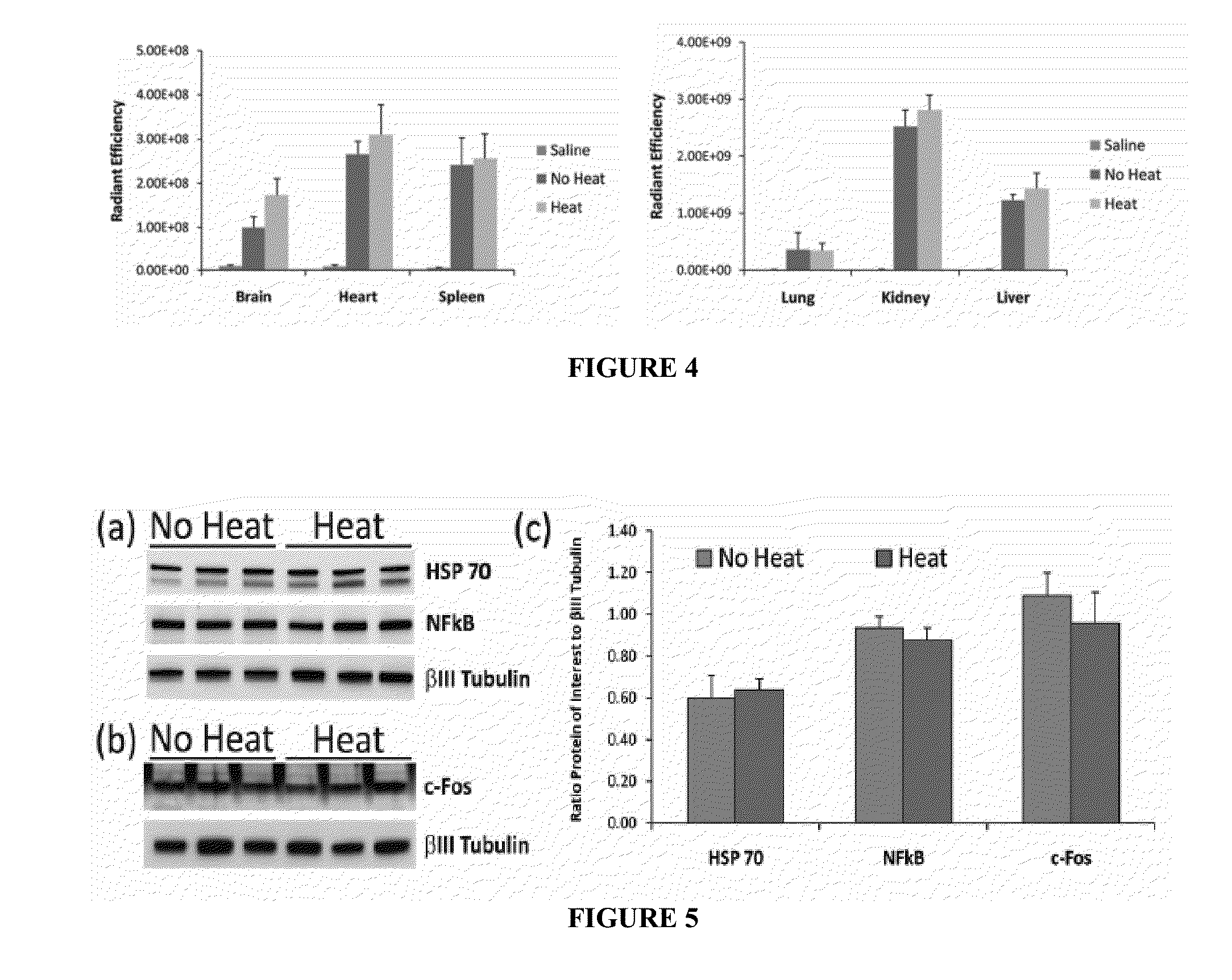Composition and methods for targeted delivery of a therapeutic compound to the brain or spinal cord of a subject for treatment of neurodegenerative diseases
a neurodegenerative disease and therapeutic compound technology, applied in the direction of peptides, peptide/protein ingredients, peptide sources, etc., can solve the problems of limited success of current therapies, no effective pharmacologic treatment of sca1 and other scas, and no dramatic benefits of marketed pharmaceuticals
- Summary
- Abstract
- Description
- Claims
- Application Information
AI Technical Summary
Benefits of technology
Problems solved by technology
Method used
Image
Examples
example 1
[0126]SCA1 was used in this study as a neurodegenerative disease model. Spinocerebellar ataxia-1 (SCA1) is a devastating neurological disorder resulting from CAG repeat expansion in the ataxin-1 gene. The polyglutamine expanded mutant ataxin-1 primarily targets Purkinje cells (PCs) of the cerebellum. The exact mechanism of PC degeneration in SCA1 is poorly understood, but it is known that the earliest morphologic change seen in SCA1 PCs is the development of cytoplasmic vacuoles that contain Bergmann glial (BG) proteins, especially S100B. These vacuoles are toxic, resulting in the abnormal development of dendritic spines. In addition, vacuoles may form in response to a stress signal of PCs. Further, S100B released by BG or from the vacuoles may modulate Akt phosphorylation of mutant ataxin-1. Akt is known to stabilize mutant ataxin-1 to aggregate in the nucleus of PCs.
[0127]An objective is to target SCA1 PCs with therapeutic peptides (TPs) that will directly influence ataxin-1 aggre...
example 2
[0129]Innovative non-invasive procedure of inducing hyperthermia in different regions of the brain. An embodiment of the method disclosed herein was conducted using the Laser Head of Mettler Laser System 540 (Mettler Electronics, Anaheim, Calif., USA). The Mettler 540 Laser System and the Mettler 540 Laser Applicator is a safe light / heat therapy device currently used in clinics on humans. This Laser device has a Wavelength of 785 nm with a Power of 80 mW. Elliptical beam spot is 2.8 mm×1.1 mm (elliptical beam area of =9.2 mm2) at the laser head aperture. Eye protection is recommended (e.g., Uvex glasses with a minimum of 80% attenuation in the wavelength range of 780 nm to 860 nm that were supplied with the Mettler 540 system). General anesthesia techniques (isoflurane or ketamine) are used to anethesize the animals. Next, the animals have their hair gently removed from the back of the head just above the cerebellum (FIG. 2A). Then, the cerebellum is heated to a temperature no highe...
example 3
[0133]An intranasal (IN) route of administering compositions of the presently-disclosed subject matter was studied. With reference to FIG. 6A, FVB two week old mice were anesthetized with ketamine and given 600 g of fluorescent labeled Synb1-ELP-GGC by IN route, the control peptide commonly used to monitor ELP localization and delivery in vivo. Displayed is the Radiant Efficiency of Synb1-ELP-GGC uptake in the brain over time after IN dose, where green is a high level of uptake, red is a mid level and blue is a low level of uptake. With reference to FIG. 6B, the total Brain distribution of Synb1-ELP-GGC fluorescence after IN dose of 240, 600, and 740 μg over time is shown, (n=3 mice per time point).
PUM
| Property | Measurement | Unit |
|---|---|---|
| Ratio | aaaaa | aaaaa |
Abstract
Description
Claims
Application Information
 Login to View More
Login to View More - R&D
- Intellectual Property
- Life Sciences
- Materials
- Tech Scout
- Unparalleled Data Quality
- Higher Quality Content
- 60% Fewer Hallucinations
Browse by: Latest US Patents, China's latest patents, Technical Efficacy Thesaurus, Application Domain, Technology Topic, Popular Technical Reports.
© 2025 PatSnap. All rights reserved.Legal|Privacy policy|Modern Slavery Act Transparency Statement|Sitemap|About US| Contact US: help@patsnap.com



